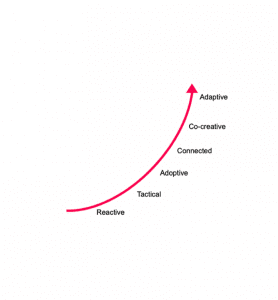Insights
Read our latest thinking on world-class leadership, and how you can create an environment for high performance.

How To Evaluate Team Leadership And Organisational Capability
Objective and consistent tools are essential for reviewing and evaluating the performance of your leadership team or organisation, so that you can provide focused support to enhance strategic and operational capability. Following extensive research and experience at Vmax, we created

A Case Study On Co-Creativity
Achieving the Co-creative phase of the organisational maturity curve is a true paradigm shift, because many of the behaviours that worked up to this point can become limiting and frustrate further progress. Up to and including achievement of the Connected

The Transformative Power of Co-creativity
In last month’s Insight we explored the nature of Organisational Maturity, and recognised that many organisations get to the Connected Phase, then stop developing, or become increasingly focused on ensuring compliance to the ‘connection processes’, which in turn stifles further

The 6 Phases of Organisational Maturity
In today’s dynamic and competitive business environment, the concept of organisational maturity is of paramount importance. An organisation’s maturity is not merely a measure of its age or size; instead, it encapsulates a spectrum of capabilities, strategies, and cultural attributes

About Vmax Consulting
Vmax Consulting has, for the past 20 years, supported organisations in over 40 countries to become the very best that they can be. We have worked across many sectors and in organisations that range from global enterprises through INGOs to

6 fundamental lessons in organisational change
Organisational transformation is very much on the agenda at the moment and in our change practice we are often asked to share insights and learning to help leaders develop their change programmes and ensure that they are successfully delivered. This
